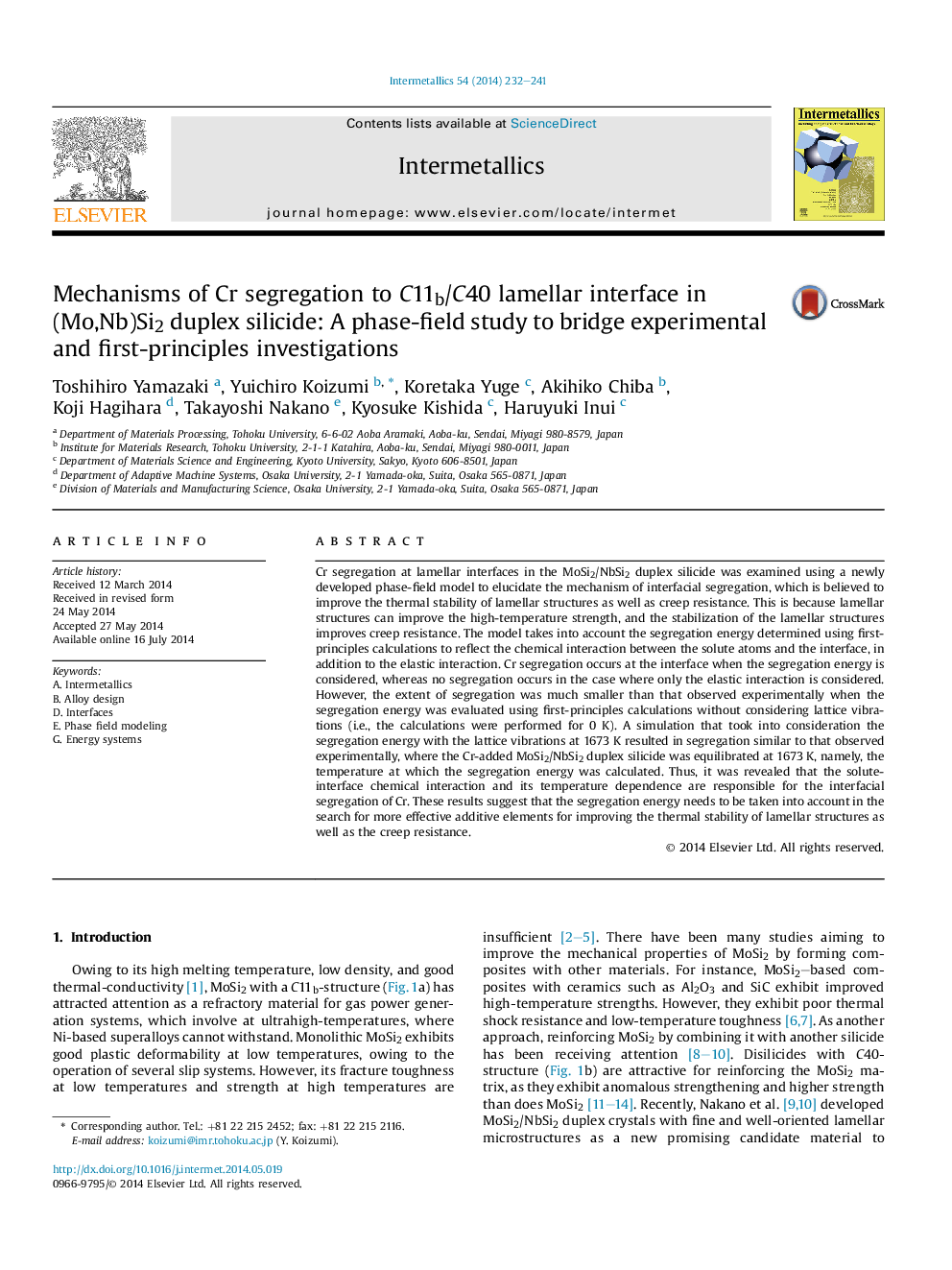| Article ID | Journal | Published Year | Pages | File Type |
|---|---|---|---|---|
| 7988604 | Intermetallics | 2014 | 10 Pages |
Abstract
Cr segregation at lamellar interfaces in the MoSi2/NbSi2 duplex silicide was examined using a newly developed phase-field model to elucidate the mechanism of interfacial segregation, which is believed to improve the thermal stability of lamellar structures as well as creep resistance. This is because lamellar structures can improve the high-temperature strength, and the stabilization of the lamellar structures improves creep resistance. The model takes into account the segregation energy determined using first-principles calculations to reflect the chemical interaction between the solute atoms and the interface, in addition to the elastic interaction. Cr segregation occurs at the interface when the segregation energy is considered, whereas no segregation occurs in the case where only the elastic interaction is considered. However, the extent of segregation was much smaller than that observed experimentally when the segregation energy was evaluated using first-principles calculations without considering lattice vibrations (i.e., the calculations were performed for 0Â K). A simulation that took into consideration the segregation energy with the lattice vibrations at 1673Â K resulted in segregation similar to that observed experimentally, where the Cr-added MoSi2/NbSi2 duplex silicide was equilibrated at 1673Â K, namely, the temperature at which the segregation energy was calculated. Thus, it was revealed that the solute-interface chemical interaction and its temperature dependence are responsible for the interfacial segregation of Cr. These results suggest that the segregation energy needs to be taken into account in the search for more effective additive elements for improving the thermal stability of lamellar structures as well as the creep resistance.
Related Topics
Physical Sciences and Engineering
Materials Science
Metals and Alloys
Authors
Toshihiro Yamazaki, Yuichiro Koizumi, Koretaka Yuge, Akihiko Chiba, Koji Hagihara, Takayoshi Nakano, Kyosuke Kishida, Haruyuki Inui,
